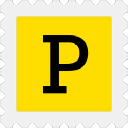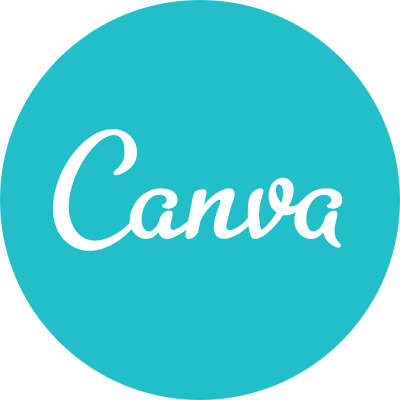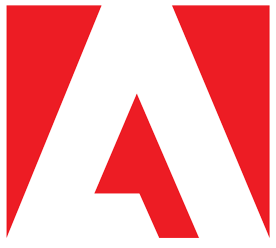My Wire-framing SaaS Is Still Bootstrapped And Making $6.6M/Year [Update]
This is a follow up story for Balsamiq. If you're interested in reading how they got started, published over 4 years ago, check it out here.
Hello again! Remind us who you are and what business you started.
I am the founder and CEO of Balsamiq, the low-fidelity wireframing tool that helps anyone acting like a designer communicate, share, and collaborate on their product ideas. Our tool is most useful for founders, product managers, business analysts, developers, and marketers—all people whose jobs require them to sketch out ideas for features, landing pages, and customer experiences.
We’ve found that some UX designers and design students use Balsamiq in their early-stage thinking too. Balsamiq is entirely bootstrapped, and I’m proud to say we’ve been around for 16 years and counting.
I officially started Balsamiq in 2008,but began work on the idea back in 2007—when I was working as an engineering lead at Adobe. We’d just started using Confluence, and it helped us completely transform documentation across the company. After some time, a product manager I worked with expressed her frustration with current visualization tools.
She needed to put her vision into a feature spec, but didn’t have the time to learn Photoshop. This was before design tools exploded in the market, and I realized there was nothing out there that solved her problem.
So, I built a Confluence plugin called Mockups. It fit into our workflow, made her life easier, and sparked a business opportunity for me. Long story short, it was the perfect way for me to build a more autonomous career and move back home to Italy.
I never set out to start anything more than a solo business, but over the years, the business grew beyond my small vision. We now have a team of 30 spread across Europe and the US, see a healthy revenue each year, and continue to build features that our customers love.
Learn more from one of my first blog posts.
Tell us about what you’ve been up to. Has the business been growing?
We’ve gone through the typical ups and downs throughout the years. 16 years is a long time for a software tool to be in business! The past several years have been especially transformative.
The last time we spoke, Balsamiq had a flat hierarchical structure, prided ourselves on our allergy to data, grew without much marketing, and other design tools were still in their infancy. We also spoke before the Covid pandemic, which heavily impacted the tech industry and our team members across the world.
Now, the market is much more mature. In a post-Covid world, revenue isn’t as easy as it was for anyone, Balsamiq included. The way people work has transformed, tech stacks have changed—it’s quite different. And, we went through some business changes ourselves.
As we (slowly) grew our team, we realized that a flat structure left us with some gaps in how we develop our people and run our business. So, we introduced managers and groups, hired a business manager and head of marketing, and began to regroup.
We’ve also begun our journey to become more quantitative. We’ve started a monthly report that covers our product analytics and finances, as well as high-level overviews from our teams.
We’re learning more about our audience, and are working with the marketing team to properly segment customers so we can be more effective with our marketing. That last part is a change too—we’ve begun working towards a more formal marketing strategy. Word of mouth still works wonderfully, but we’re experimenting with new channels and plan to give the branding a refresh.

What have been your biggest challenges in the last year?
In the past year or so, we’ve seen some turnover as we standardized job titles and descriptions, and layered in performance reviews. This is natural, as business needs change over time.
We also spent a lot of pandemic time pruning, or getting rid of tech, feature, and process bloat in our tool and business. It felt good to clean things up, but we were itching to ship again. Now, we get to do just that.
We’re still bootstrapped and still Balsamiq, so we don’t need to grow like the mega tech giants do. For us, it’s about finding our niche, serving our customers extraordinarily well, and treating our team with kindness and respect.
What have been your biggest lessons learned in the last year?
I’ve spent the last year learning how to take a step back and work on the business, not just in it. I’m a product-focused CEO, and also happen to be our Head of Product. So I’ve been learning how to split my time between those roles, manage and develop a leadership team, and build a stronger company vision.
Things that have helped me in this journey include a lot of conversations with founder friends, YouTube videos, articles, and books. I’ll never pretend I know it all, and that doesn’t scare me. I know I can learn about it and rely on my team to share the feedback that helps us all improve.
What’s in the plans for the upcoming year, and the next 5 years?
We’re working on it! We don’t try to plan too far ahead. Instead, we make decisions with our long-term future in mind. Our current goals are to get back to a more efficient balance of operating costs to revenue and continue our journey of sustainable growth.
We’re still bootstrapped and still Balsamiq, so we don’t need to grow like the mega tech giants do. For us, it’s about finding our niche, serving our customers extraordinarily well, and treating our team with kindness and respect.
We continue to see more and more customers sign up for Balsamiq from all around the world, which is exciting.
What’s the best thing you read in the last year?
Earlier this summer, we did Radical Candor training as a company, and every team member got a copy of the book. We’re already seeing the positive impact of the training.
Now, I’m reading some of the EOS books along with the other managers at Balsamiq. We’re not sure if we’ll adapt the full system, but there are some interesting tips in there. It was recommended by some founder friends.
Advice for other entrepreneurs who might be struggling to grow their business?
Focus is fundamental. Complexity creeps in all the time, even if you’re trying to do something small. I’ve trained myself to think of something as “version 3,” whether we’re designing a feature or making a strategic decision.
That helps me scale it back and take action sooner. 90% of the time, it turns out that whatever we cut out wasn’t necessary, and it stays on our backlog for years. The other 10%, we plan for a follow up project.
Same goes for doing too many projects at once. Most people do this, but you only have so much time in your day where you can be effective. Scale down the project and scale down the roadmap. This often helps people get unstuck and moving in a direction. You’ll find out if it was the right choice with time!
Making things shorter takes effort, several conversations, and crazy discipline. But it also makes the work better and helps you move forward.
Are you looking to hire for certain positions right now?
Not right now, we rarely hire. Historically, I haven’t had big dreams of building a huge team and scaling rapidly. We only hire when we need someone.
Where can we go to learn more?

Download the report and join our email newsletter packed with business ideas and money-making opportunities, backed by real-life case studies.

Download the report and join our email newsletter packed with business ideas and money-making opportunities, backed by real-life case studies.

Download the report and join our email newsletter packed with business ideas and money-making opportunities, backed by real-life case studies.

Download the report and join our email newsletter packed with business ideas and money-making opportunities, backed by real-life case studies.

Download the report and join our email newsletter packed with business ideas and money-making opportunities, backed by real-life case studies.

Download the report and join our email newsletter packed with business ideas and money-making opportunities, backed by real-life case studies.

Download the report and join our email newsletter packed with business ideas and money-making opportunities, backed by real-life case studies.

Download the report and join our email newsletter packed with business ideas and money-making opportunities, backed by real-life case studies.





























